Window to the future: New Bedford man looks to make robotics lab at former Glaser Glass
NEW BEDFORD — During its time as home to long-running local glazier business Glaser Glass, the distinctive multi-structure site at 1265 Purchase St. became a landmark on one of New Bedford's most well-traveled city blocks. Now, SouthCoast native and city resident Mark Parsons looks to make the location iconic for a new reason: robotics.
"Those windows are absolutely crucial," Parsons said, motioning toward the lengthy span of glass-paneled bay doors facing Purchase Street at the former Glaser site. The reason, Parsons explained, is to offer the public a glimpse into the inner workings of the business he wants to start there, New Bedford Research and Robotics (NBRR).
"We don't want this exciting work to be cloistered away," Parsons said. "We want it to be present and helping to influence and inspire."
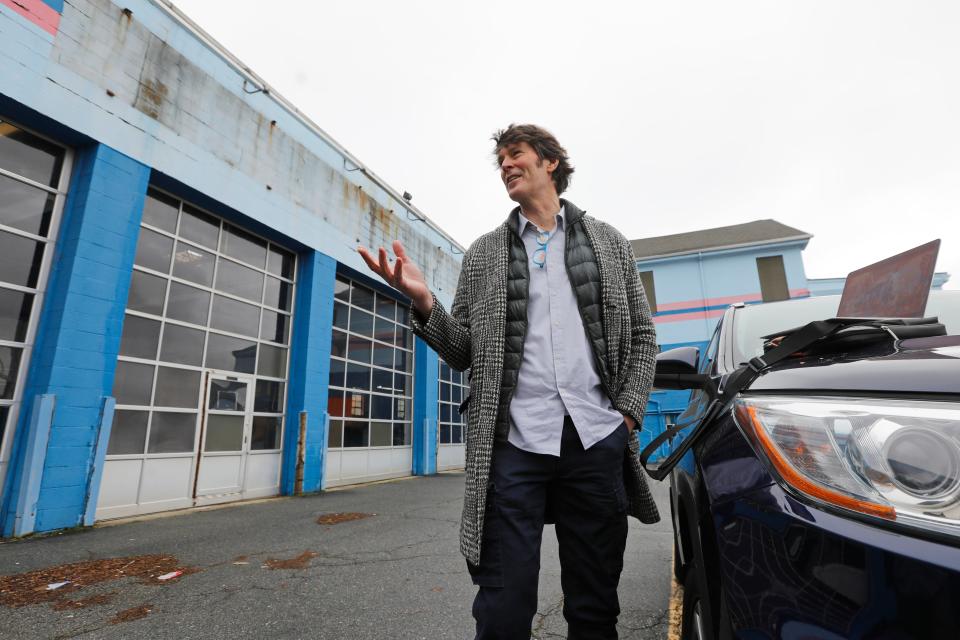
The multi-faceted concept is not simply defined, but taking a look at its predecessor, the Consortium for Research & Robotics (CRR) started by Parsons in 2014 in New York City, provides an idea of the kind of work passersby might expect to see.
College credits: Never too soon: Bristol CC Early College program approved for New Bedford High
"We did funded research for NASA around the Artemis Moon to Mars mission. We were designing and 3D printing — with robots — structures designed for moon habitation," Parsons said. "NASA is actually looking at how can we put astronauts on the Moon as a springboard to get them to Mars, and how to harvest hydrogen there in order to power the rockets."
The making of an 'ecosystem'
While that example may end up traveling the furthest distance, Parsons says the true spirit of his vision is more down-to-Earth, yet broader in scope. "When you get people from corporations, startups, small businesses, university students and researchers, artists and local school students all sharing the same tools, it creates this ecosystem connecting all these different layers and you have all these perspectives interacting," he said. "It's not good enough to just teach people how to use technology — you also have to have them rub elbows with whatever they're next to."
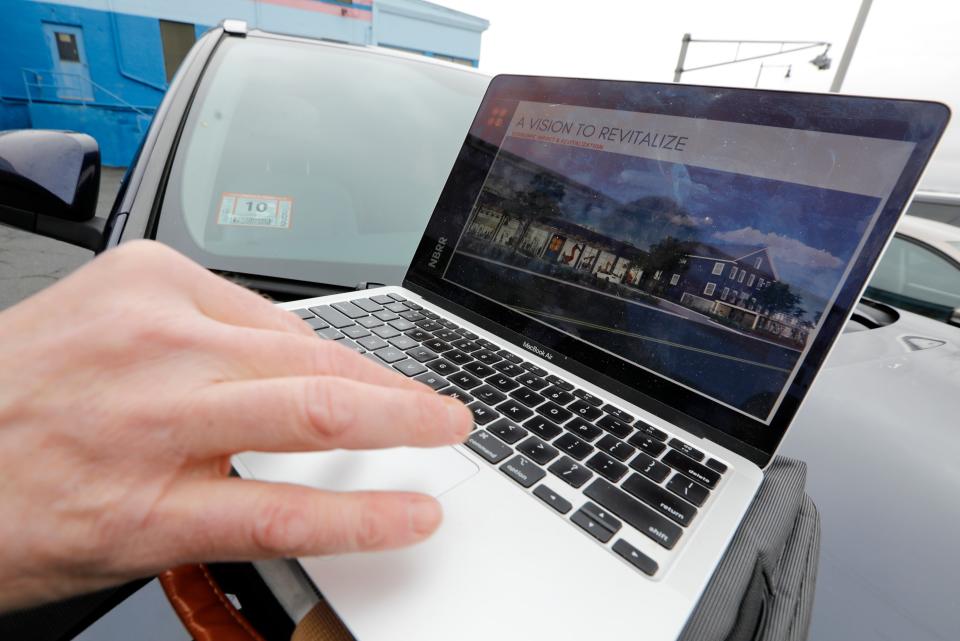
At CRR, Parsons says he has learned that incorporating art into the mix is crucial to the "creative-practical spectrum" that exists within the environment. "One time, we had our biggest robot making zen gardens in the sand when an international company was touring our space and someone said, you know what? We have this specialized product we're working with and if you could somehow, either digitally or physically, capture the zen gardens that you're doing, we'd use the designs," Parsons said. "So we ended up creating rubber molds of those patterns for them to make high quality concrete panels for this massive cladding system that attaches them to the exterior of new construction."
A Renaissance man
Parsons' passion for bringing eclecticism to robotics stems from his own widely-varied background — one that came to include carpentry, sculpting, architecture and more before arriving at industrial robotics. A tri-town native, Parsons grew up in Mattapoisett and Marion before moving to New Bedford as a UMass Dartmouth student in fine arts and sculpture, and developing a carpentry trade. After graduate school, Parsons' carpentry and ever-broadening knowledge of building would land him a job at the Pratt Institute in New York City running a wood shop in the architecture department before being named a director there, while also running his own business.
Education updates: Merged New Bedford Catholic school gets a new name — plus a gym, a STEM lab and more
Through it all, Parsons made it a point to keep change and growth as constants in his professional life. "Every year I was like, alright, I will do this another year and then I'm going to do something else — and I always did, only I did it by building something new, or hiring some new people, or creating a new shop," Parsons said. "I was able to change my job every single year by adding new capabilities."
By 2013, Parsons' resume had come to include casting and other metal work, laser cutting, 3D printing and more before his segue into industrial robotics. "It had become apparent that we were doing some amazing things with design and digital manufacturing output and that's when I founded the Consortium for Research & Robotics," Parsons said of CRR's 2014 launch.
Bringing the CRR model to New Bedford
CRR's business model is built around five programmatic areas: corporate research and development, small business incubation, university research, community engagement, and STEAM. It's an inclusion-based model meant to "swing open the doors to the community," Parsons said, encouraging involvement with local schools, non-profits and budding entrepreneurs right alongside larger international corporations and entities; as well as hosting speakers and other public presentations. "Instead of keeping all these capabilities and opportunities kind of sequestered in academic areas, we served communities. That was the whole purpose, to take this and look outward to serve communities."
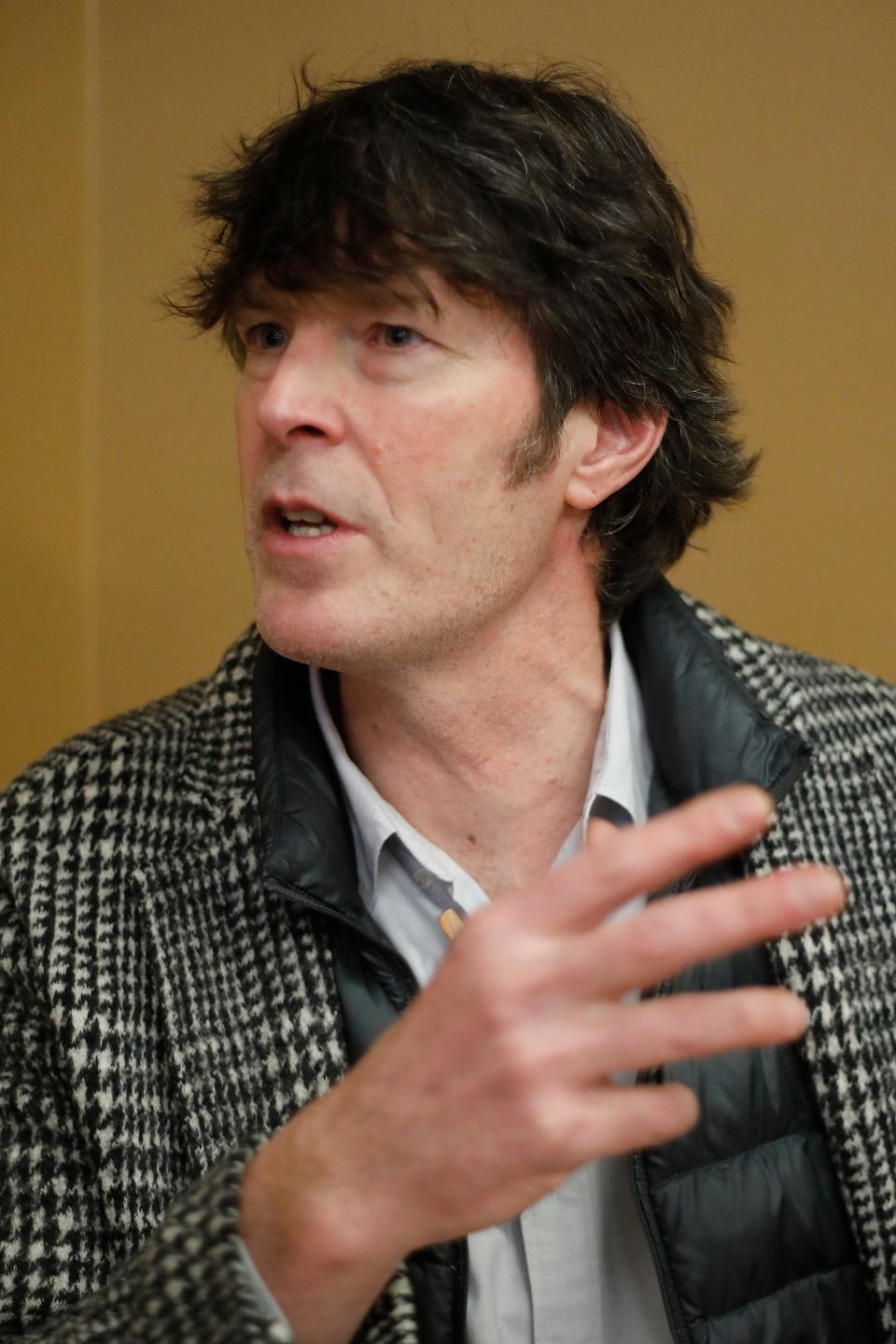
In New Bedford, Parsons looks to replicate the CRR model, only "bigger and better," and as part of what he sees as a new era for the city relative to plans for a South Coast Rail train station.
"This site and this whole area are going to be critical, then when you consider the Quest Center and all the great things going on at Groundwork right next door, this could really be sort of an innovation avenue," Parsons said in reference to plans for a footbridge that would provide easy access between the area of the Whale's Tooth parking lot and rail station, and that of the Glaser site. "I've been looking at buildings and partnerships since 2017. I've been asked to do this project in Providence, Fall River ... but I have a deep love of New Bedford, and I feel lucky that my wife, who's not from this area, also fell in love with this city."
Seeing signs of South Coast Rail?: New Bedford ready for first train ride to Boston since 1958
Coincidentally, Parsons' own history as a Whaling City resident gives him a particular connection with the Glaser Glass site.
"While I was doing carpentry in New Bedford I had a little red Dodge Ram 50, and I frequented Glaser for window repairs more often than I wished I had to," Parsons said, also noting his former work studio that neighbored Glaser.
Community conversations and partnerships
Parsons, who says he currently has site control of the 30,000-square-foot property, still has a way to go in the process of bringing NBRR to fruition, but his exchanges with city officials, Economic Development Council members and a number of local organizations have convinced him that his vision for New Bedford's future is aligned with that of many. In fact, some are already looking forward to collaborating.
Tobey Eugenio, creativity and STEAM director at Our Sisters' School in New Bedford and STEM advisor to NBRR, says OSS is already lined up to be one of the first schools to partner with Parsons even before the opening of NBRR, with plans to introduce students to industrial robotics with a small-scale machine in the fall. "We're going to be developing curriculum that gives students opportunities to use their voice, choice and agency. So our work will involve the robotic arm where we're using it in some capacity to create something that makes an important statement."
Eugenio says her hope is that, in addition to learning new concepts and skills, students who are introduced to robotics this way will keep NBRR in mind as a local resource to help them realize their visions.
Top players: 30 baseball players to watch from the SouthCoast in 2022
North Terminal to see expansion at Port of New Bedford
"It's empowering to provide this access because they'll end up coming back," Eugenio said. "The younger we get these students in, the more they’re going to feel like that’s their place; their community’s got their back. Have an idea? Come to to NBRR and let us support you. Want to help other humans with a social impact project? Come talk to us and let us help you."
Dave Prentiss, president and CEO of New Bedford Symphony Orchestra and cultural advisor to the NBRR project, says Parsons' community-oriented approach is in-line with the orchestra's.
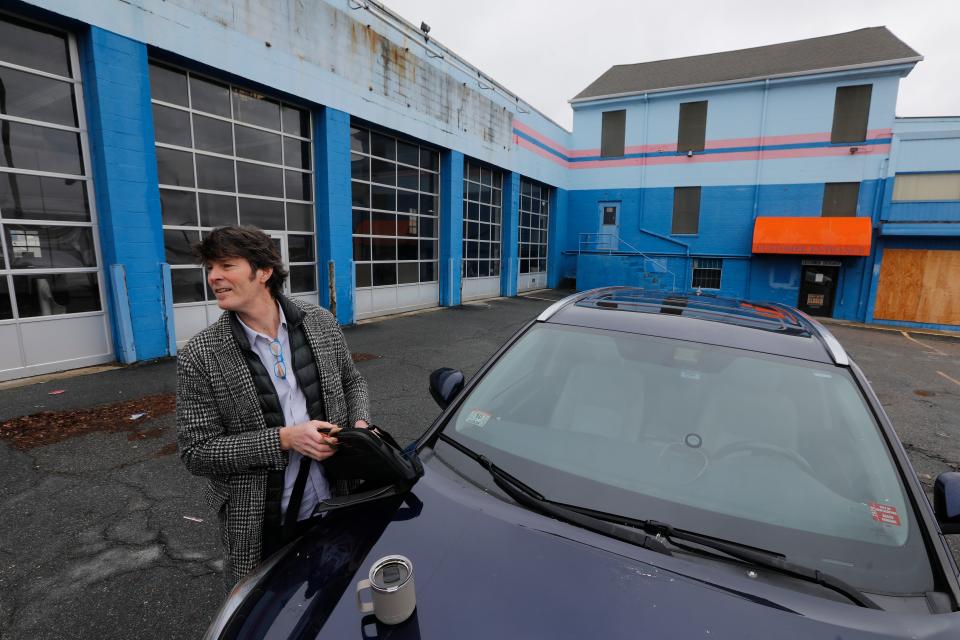
"One thing that got me excited about this is that (Parsons) was a sculptor, so he has the background to see the potential for connections between technology and the arts," Prentiss said. "At the New Bedford Symphony Orchestra we have a strong commitment to educational programs, so naturally we want to help the NBRR develop partnership programs to help bring children into the arts, and I'm happy to have been brought into this on the ground floor."
Parsons noted discussions also having been started with New Bedford Public Schools, One SouthCoast Chamber, New Bedford Ocean Cluster and DATMA (Design Art Technology Massachusetts).
Accessibility shaping the future
NBRR advisor Lee Kuczewski, CEO of New York-based design and data consultancy Merging Future, is a New Bedford native who met Parsons by chance in New York through CRR. Kuczewski says he is excited for a chance to work on something that would benefit his hometown.
Property Transfers: Historic antique cape in Dartmouth sells for more than $1 million
"NBRR is a really important initiative, and ... it’s important for the community leaders to consider the efforts in establishing New Bedford not only as an innovator, but as a future destination and hub to blue technology, robotics, climate and renewables research, and other frontier technology startups," said Kuczewski. "It’s initiatives like these that will enrich the fabric of New Bedford’s future, and ultimately will provide access to an inclusive space, where belonging, growth, collaboration, and economic opportunities flourish."
As cutting-edge as it all may seem today, Parsons cautions that not being at the technological forefront of industry may equate to falling behind sooner than later.
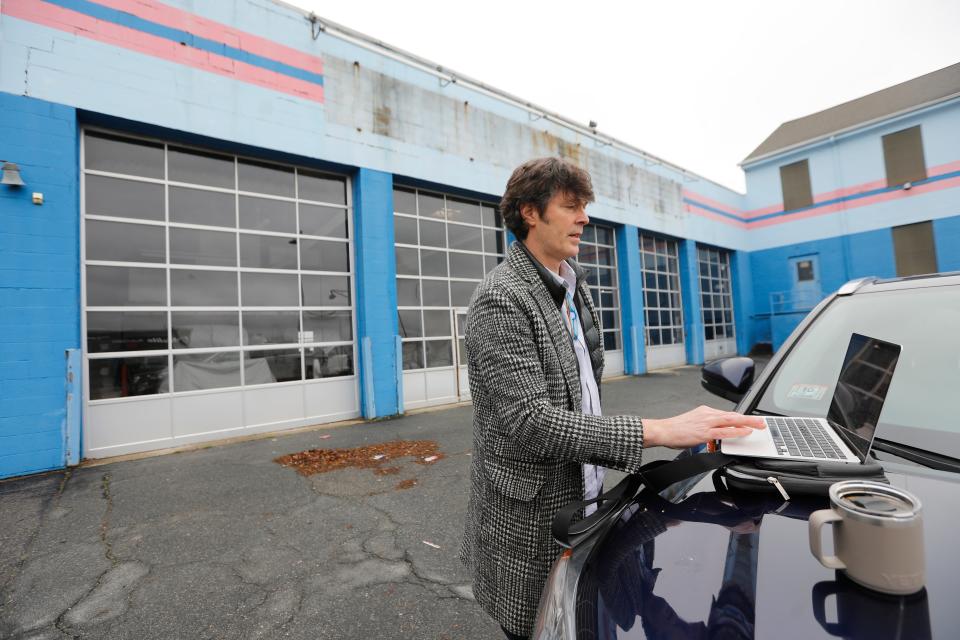
"More and more, kids are going to grow up expecting access to the type of knowledge it takes to do something like operate a robot," Parsons said. "We're going to have businesses that start here, and those businesses — as well as others like them — are going to need employees who are educated in new technology. So at some point it becomes a question of, how do we keep people here?"
For more information on New Bedford Research & Robotics, visit New Bedford Research & Robotics at researchandrobotics.org
This article originally appeared on Standard-Times: New Bedford Research & Robotics lab to be housed at Glaser Glass site

